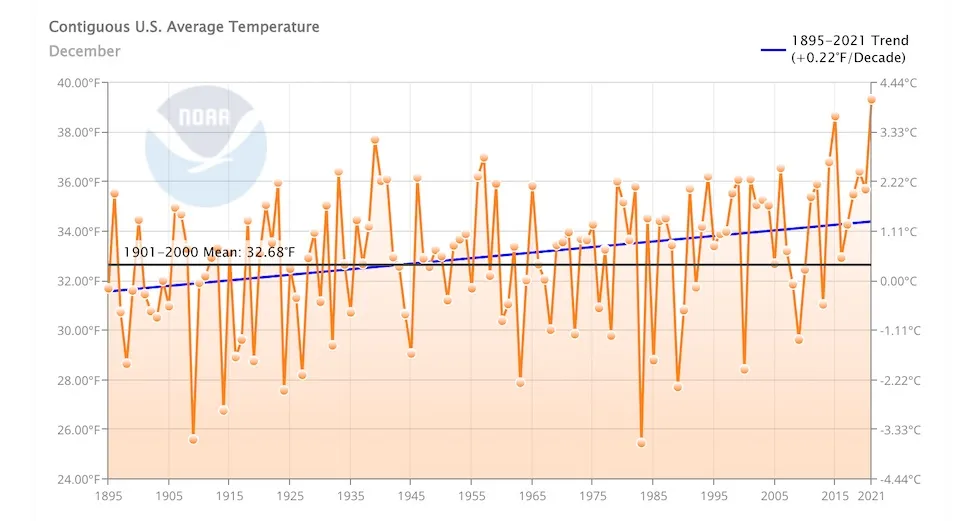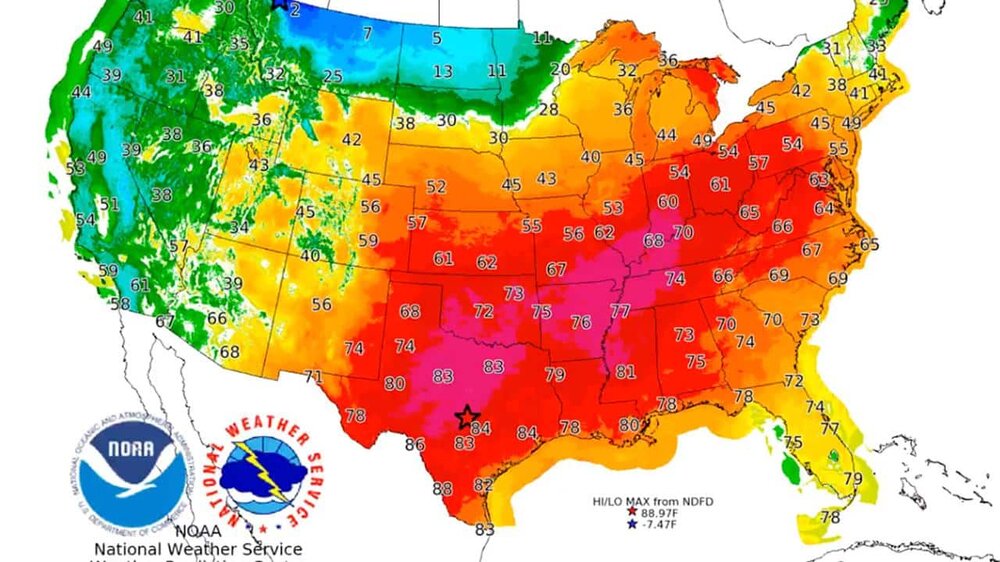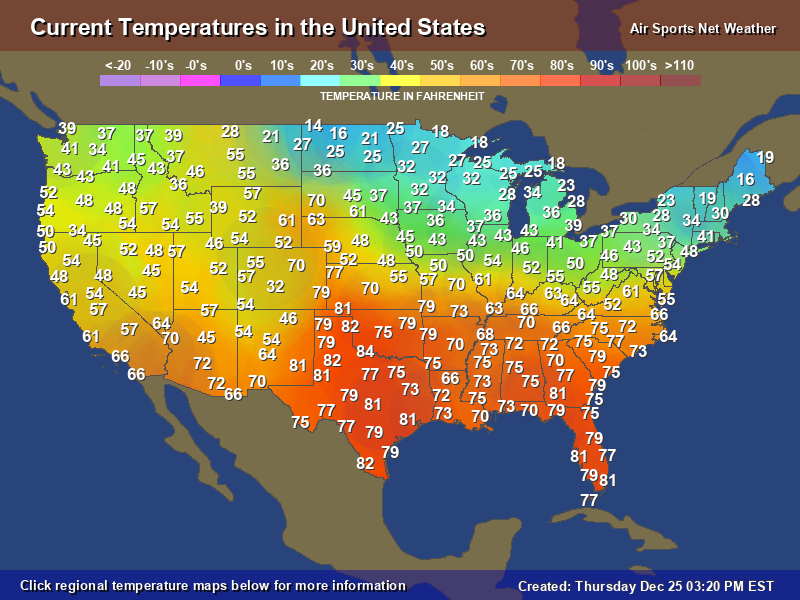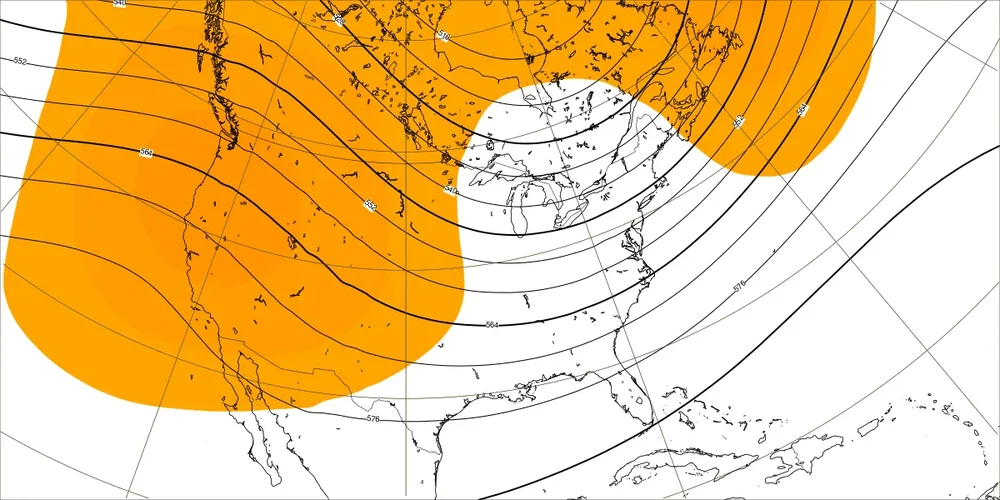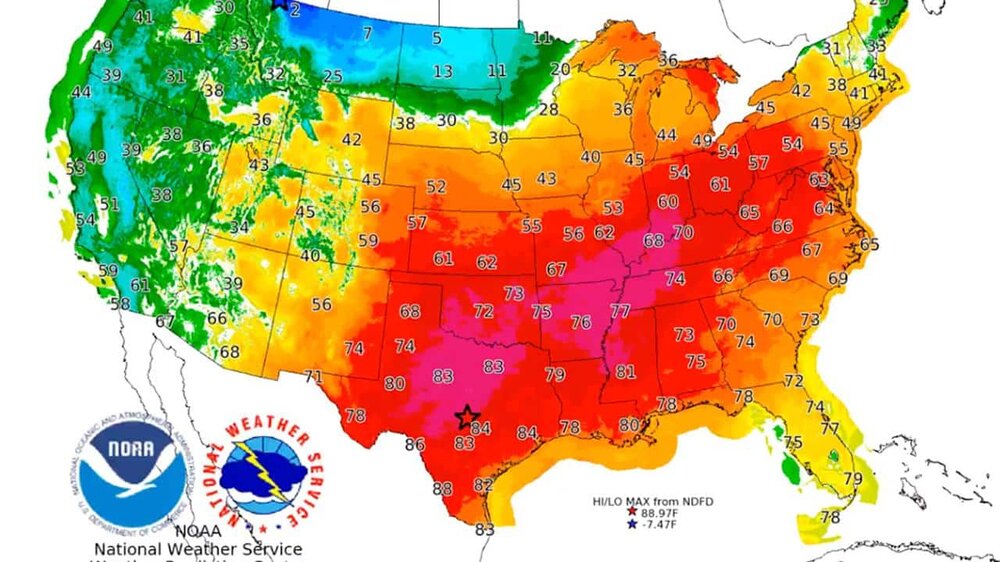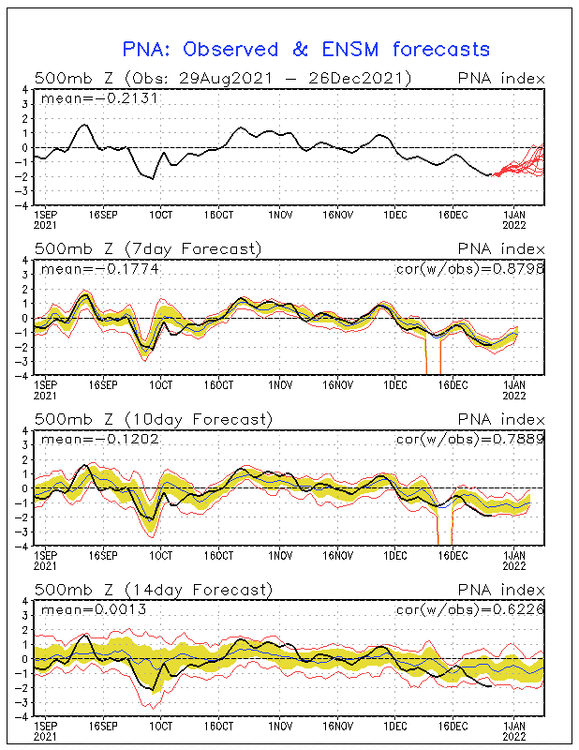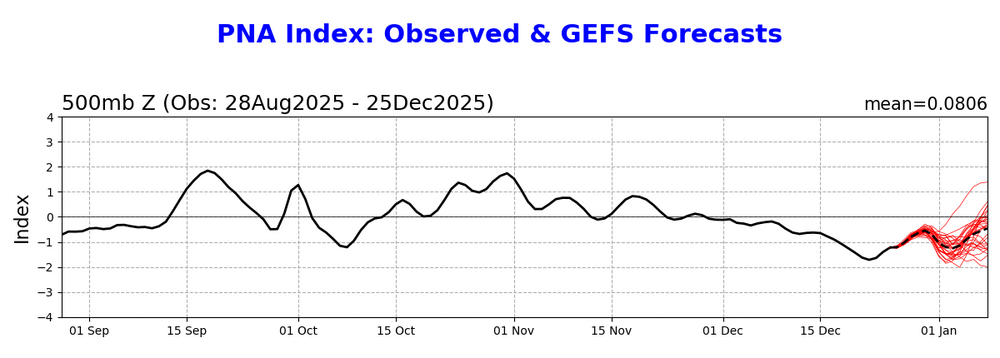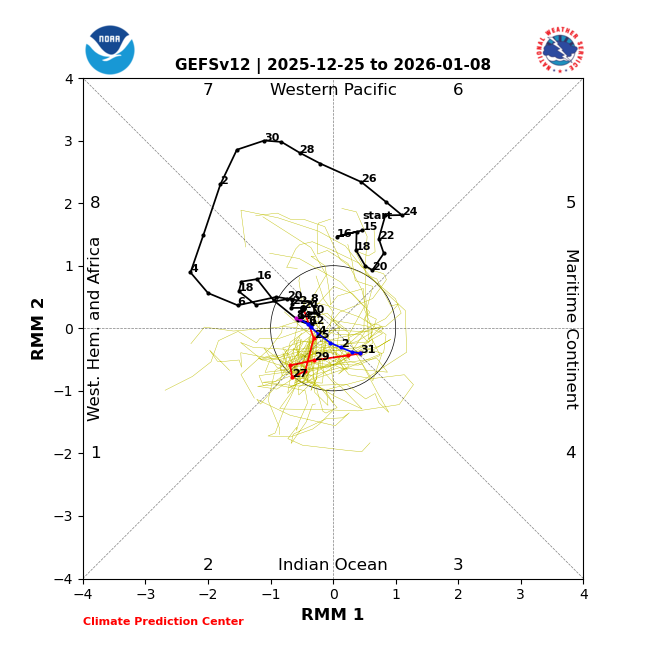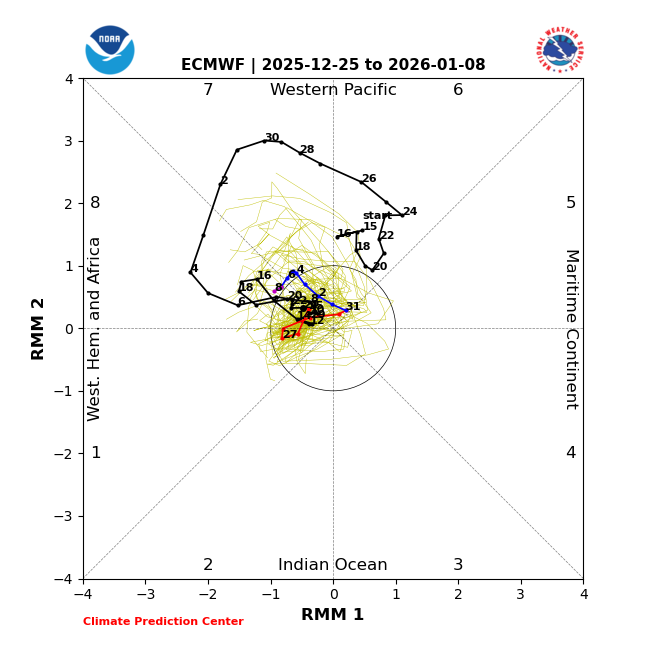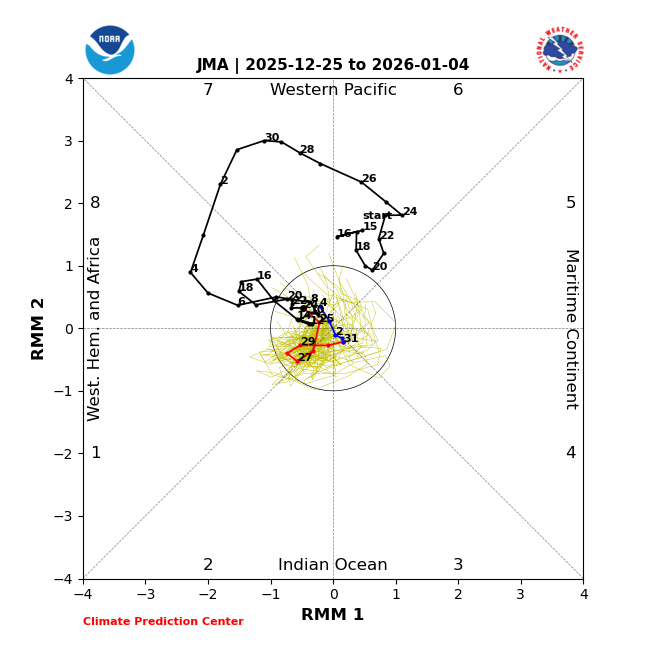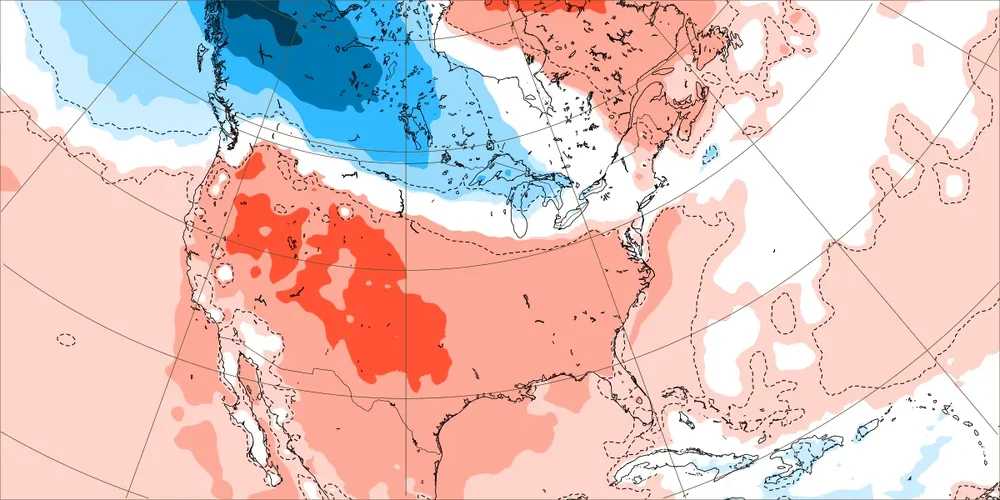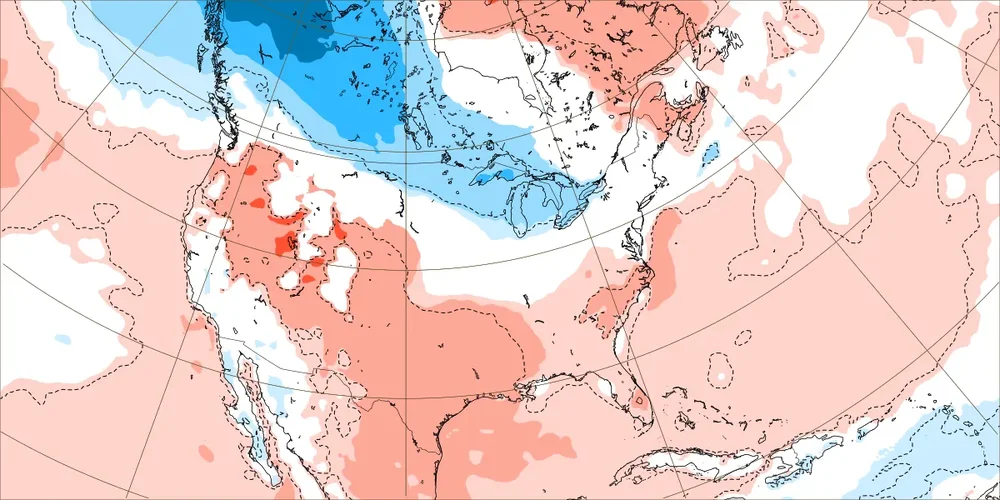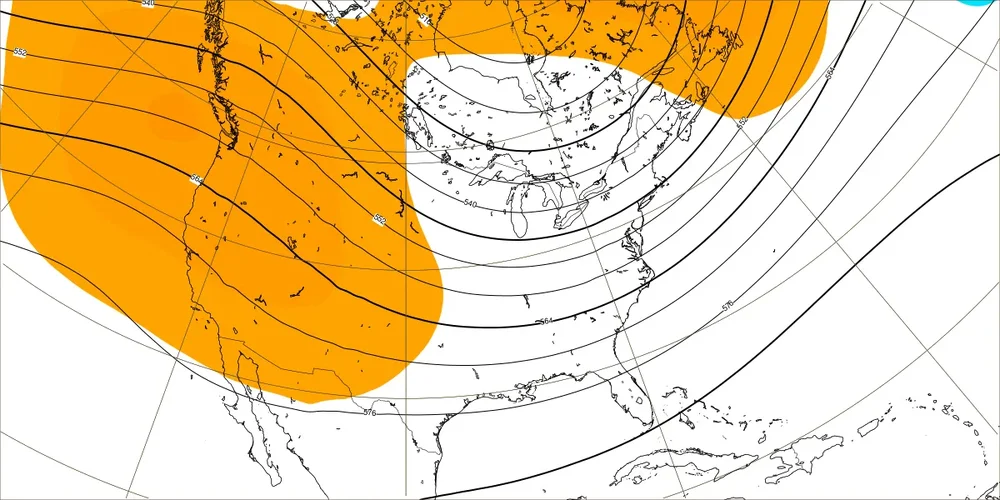
GaWx
Members-
Posts
17,698 -
Joined
Content Type
Profiles
Blogs
Forums
American Weather
Media Demo
Store
Gallery
Everything posted by GaWx
-
Based on population weighted heating degree days, a good measure of energy usage, the Conus in Dec won’t be that warm at all! Pop weighted Dec temps are progged to come out to only ~1 F warmer than normal. My estimate is for Chicago to end up Dec 3 BN, Cinci 2.5 BN, Balt. 4.5 BN, Philly 4 BN, NYC 5 BN, and Boston 4.5 BN. Even the upper SE (NC) should come in slightly BN and then ~+1.5 at ATL. SL should be right at normal. DFW should be ~5 AN, DEN ~11 AN, Phoenix 6.5 AN, LA 3 AN and Seattle 4.5 AN. Based strictly on geographic area though, my guess is that the Conus will come out to ~3 AN for Dec (~1 BN E 1/2 and ~7 AN W 1/2) or ~37 F. If it comes out to 3 AN, that wouldn’t be anywhere near the records of 2023 (~5.5 AN or 40.0), 2021 (~5 AN or ~39.3 F) 2015 (~4.5 AN or ~38.6 F), and 2024 (~4 AN or 38.3 F). So, I expect Dec of 2025 on an aerial basis to come out ~3 F colder than 2023, ~2 F colder than 2021, ~1.5 F colder than 2015, and ~1.0 F colder than 2024. Also, 1939 was ~37.7 F. So, I believe that on an aerial basis that Dec of 2025 will come out no warmer than 6th warmest Dec since 1895. Also, it’s possible that 1957 and even 2014 end up warmer than 2025 if I’m a little too warm with my 37 F guess by, say, a couple of tenths, possibly dropping 2025 down to as low as 8th warmest. @TheClimateChanger
-
Thanks. Thus, we agree on aerial weighing. Do you agree that pop weighted would have been warmer in 2021?
-
Which avg Conus Christmas highs were warmer, 2021 or 2025? 1. Based on geographic area, I’d say 2025. Why? Because most of the W 1/2 including most of the Plains states as well as MO and much of TX were warmer in addition to much of the SE. Much of the NE to Ohio Valley/Michigan to Virginias/KY and much of the Midsouth were cooler. Interestingly, NYC and Chicago were about the same. 2. In terms of population weighted highs (energy usage indicator), I think 2021 was net warmer because of the high population of the NE to Ohio Valley to Michigan being warmer. 2021 forecasted highs: 2025 3:20PM EST temps:
-
78 was the high at SAV today. They’ve had 78, 78, and 75 the last 3 days. Torchy but no records, which are 81, 83, and 82. Most of their record highs in winter are in the low 80s as 70s aren’t at all uncommon. We still have 4 more days of mid to upper 70s to go before the bottom falls out. So, that would make 75ish+ 7 days in a row. Good job by the models with the warmth for a change! This is the first period they’ve done well since the week prior to Thanksgiving. They saw this coming pretty far out.
-
The best looking H5 map for cold potential for the E US in Jan on today’s Euro Weeklies is this one with a nice +PNA, which is for 1/12-18 (similar to yesterday): Just 3 days ago it still had an ugly -PNA: so there’s been a big change for an ens mean for a week long period Here’s today’s temp map for the same week (similar to yesterday): chilly but I fully expect this would turn much colder than this if the +PNA idea is right Here’s what the same week’s map had just 3 days ago, which is consistent with that ugly H5 then:
-
Merry Torchmas, fellow wx geeks, weenies, and nerds: If you’re still reading , this map isn’t for today. Rather, it’s the forecast map for the very similar Torchmas of 2021, which was then at or near the warmest Christmas on record and was from one of the favored winter analogs that folks have been following, 2021-2. That Dec also featured a strong -PNA that still wasn’t forecasted to turn to a +PNA in Jan even as late as the Boxing Day PNA forecast! It actually went positive on Jan 9th and stayed that way through Feb 15th! In addition to a chilly Jan, GSO and much of NC had a snowy Jan.
-
Regarding today’s Torchmas for much of the country, the analog 2021 is nearly a carbon copy with it then at or close to the warmest nationwide on record (this was the 12/25/21 forecast map put out just before): Like 2025, Dec of 2021 also had a very strong -PNA. Here was the PNA forecast on 12/26/21, no real end yet in site on the GEFS: (the PNA actually became positive on Jan 9th and stayed that way through Feb 15th even though this model still had no clue about that on Boxing Day): Here’s the eerily very similar current Dec of 2025 PNA and forecast:
-
Merry Christmas, fellow wx nerds/weenies! Today’s MJO forecasts aren’t bad at all for early Jan and heading into mid-Jan with them mainly on the left side and weak: GEFS: EPS: JMA:
-
Merry Christmas to snowman and everyone! A 100+ mph or 50ish m/s SPV 10 mb zonal wind peak has been forecasted for over a week on the EPS (by the way, 80-85 mph is normal…so 100 mph isn’t as anomalously high as it may sound). During these cold and often snowy E US periods in Jan, the SPV averaged 100 mph+ (peak in mph noted) keeping in mind that the Jan of 2026 peak is being forecasted at ~110-120 mph: -2025: 130 peak -Jan 1-8 of 2018, which had very cold and a very rare SE coast big snow: 130 -2016 had cold around the period of the huge NE snowstorm: 150! -2014: 120 -2nd half of 2011 had big snows/cold NE: 110 -1st half of 2010: 120 -Jan 1-17 of 2009: 150! -2nd half of 2005: 160! -2nd half of 2000: 125 -1st half of 1996: 130 -1984: 155! -Jan 1-18 of 1981: 150! -Jan 9-20 of 1979: 125 ——————————— Anyone can see all of these zonal wind peak details here, which is where I just got them from: https://acd-ext.gsfc.nasa.gov/Data_services/met/ann_data.html#ncep_clim_stats_nh
-
Today’s Euro Weeklies didn’t just hold onto all of yesterday’s widespread significant colder changes. They also cooled the only week that wasn’t cooled yesterday: Jan 5-11! Yesterday’s Jan 5-11: Today’s Jan 5-11 is below. This cooling means there are no more widespread mild weeks being forecasted in the E 1/2 of the US like there were just 2 days ago: Today’s also has a stronger suggestion of a +PNA in the means for 1/12-18:
-
Followup: As the quoted post showed, US pop weighted HDD rose sharply on the EPS from the 12/17 12Z run’s well BN 74 to the 12/22 (Mon) 0Z run’s NN 99 for 12/28-31, meaning a much colder change. What has happened on the EPS since that Mon run? - 12/28-31 has maintained 24 of that 25 HDD gain from 12/17 with it at 98 HDD - 1/1-4 has gone from a well BN 78 HDD in the 12/22 0Z run to a NN 101 on the 12/24 0Z run. And that’s even with the 12/24 0Z run not being as cold as the 12/23 12Z run’s 108 HDD! -So, just since a week ago, the EPS’ US pop weighted HDD have increased a whopping ~47 HDD just for the period 12/28-1/4 (from way BN to NN)! That is a US avg of 6F colder per day, which probably means something like 8F colder/day in just the E US, alone, since the W is probably a little warmer. 12/24 0Z HDD run left side in purple: 12/22 0Z HDD run left side in purple 12/17 12Z HDD run left side in purple: look at how warm that run was compared to today’s! All days had BN to well BN HDDs:
-
Based on the overall 0Z/6Z model consensus being not as cold in the E US as the 12Z/18Z model consensus, which had lead to ~15% gain by late evening (best day’s gain of all of 2025 so far), natural gas has not surprisingly had a good amount of selling, including profit taking, which has NG down over 4%. But that level is still 10-11% higher than the close of Monday. Let’s see whether or not the 12Z will bounce back colder. This market will likely tell us the answer without having to actually look at the models, themselves.
-
Based on your and Don’s reliable snowy La Niña Dec indicator, I’ve already predicted a near to above avg Jan+ NYC snowfall of 21”+, which would very likely mean a seasonal total of 30”+. We’ll see if it works once again.
-
Indeed, which is something I’ve posted about before. I added this right after you read my post: But a stronger than avg SPV would by no means automatically be a death sentence to a cold E US. Example: Jan of 2025 had a near record strong SPV at times. In addition to Jan of 2025, these strong SPV Jan periods were also cold and/or snowy in at least much of the E US: -2022 -Jan 1-8 of 2018, which had very cold and a very rare SE coastal snow -2016: cold around the period of the huge NE snowstorm -2014 -2nd half of 2011: big snows/cold NE -1st half of 2010 -Jan 1-17 of 2009 -2nd half of 2005 -2nd half of 2000 -1st half of 1996 -1984 -Jan 1-18 of 1981 -Jan 9-20 of 1979
-
It would be no surprise whatsoever if the Jan SPV at 10 mb is stronger than avg as that’s been what the extended EPS has shown on most runs since Dec 3rd: Dec 3rd run: goes stronger than avg ~Jan 2nd and then gets stronger to end of run (Jan 17th): 12/23 run: goes stronger than avg on Jan 3rd and stays through end of run (Feb 6th): But a stronger than avg SPV would by no means automatically be a death sentence to a cold E US. Example: Jan of 2025 had a near record strong SPV at times.
-
But it then goes back down into the troposphere?
-
A number of folks are confused by the term “Weeklies”. They’re currently called that not because of the frequency of issuance but rather the in-house maps are for one week at a time and also they go out 5-6 weeks. Going back a number of years I know they were issued only twice a week on Mon and Thu. I can’t recall if they were issued only once a week going further back. I’m leaning that way though. Maybe on Mondays only originally? The more I think about it and try to recall, the more positive I am that they started out being issued only once per week. ————— KSAV had 75 today. The forecast is more 75s every day through Sunday. That would give us 6 days in a row of 75ish. Then the bottom falls out on 12/29!
-
BAMwx met Brett Waltz with update this morning:
-
Hey Chuck, I don’t remember whom and you may not have said it, but I remember a number of posters and/or tweeters saying that the 11/28/25 SSWE was a “reflected” or “reflective” SSWE and that that meant it wouldn’t translate down to the troposphere. I don’t understand what that means, but rather I remember it being discussed and that that was bad news. What do you know about this or do you know anything about it? Does this mean it really wasn’t reflective or reflected (whatever the correct term is). TIA
-
But obviously even if it hadn’t barely dipped below the 0 line, we know that that’s academic. Even if it had dipped only to, say +1 or +2, do we really think that that would have made a difference? After all that likely would still have been the weakest that early since 1968 and would have still been a a very impressive whopping 30 below avg. So, 30 below vs 31 or 32 below. But anyway, I pointed out that it officially barely reversed per the Euro to keep the record straight. Thus, I feel 11/28/25 will likely be added to the list of official major SSWs.
-
Ray, You may need a magnifying glass to see it, but it was just barely an official zonal wind reversal at 10 mb….but only barely (at ~-0.5 m/s per Euro on 11/28/25) after the 11/24/25 initial dip barely failed:
-
I don’t think that it’s an exaggeration to say that today’s Euro Weeklies colder changes in the aggregate for the E US are at least near the largest I can recall this entire season with 4 of the 5 weeks notably colder and only the other (Jan 5th-11th) staying about the same (pretty mild). If you want to look specifically at the big changes in the ecmwf in-house maps, themselves, vs yesterday, you can go here to the main ENSO thread:
-
December 2025 Short/Medium Range Forecast Thread
GaWx replied to John1122's topic in Tennessee Valley
I don’t think that it’s an exaggeration to say that today’s Euro Weeklies colder changes in the aggregate for the E US are at least near the largest I can recall this entire season with 4 of the 5 weeks notably colder and only the other (Jan 5th-11th) staying about the same (pretty mild). I’ll leave it to @Carvers Gapto post more about them as he normally is thorough communicating about them here. But if you want to look specifically at the big changes in the ecmwf in-house maps, themselves, vs yesterday, you can go here to the main ENSO thread: -
I don’t think that it’s an exaggeration to say that today’s Euro Weeklies colder changes in the aggregate for the E US are at least near the largest I can recall this entire season with 4 of the 5 weeks notably colder and only the other (Jan 5th-11th) staying about the same (pretty mild): 1. Week 1: Dec 29-Jan 4 Old: New: colder although already expected 2. Jan 12-18: Old: New: 3. Jan 19-25: Old: New: 4. Jan 26-Feb 1: Old: New:
-
Hey Chuck, Ignoring end of month highest volume contract changes, contract expirations and other misleading daily changes at investing.com, it appears to me when looking at investing.com daily data that today’s ~11% legit rise of natural gas may be the single highest legit rise in a day in all of 2025! What do you think?

